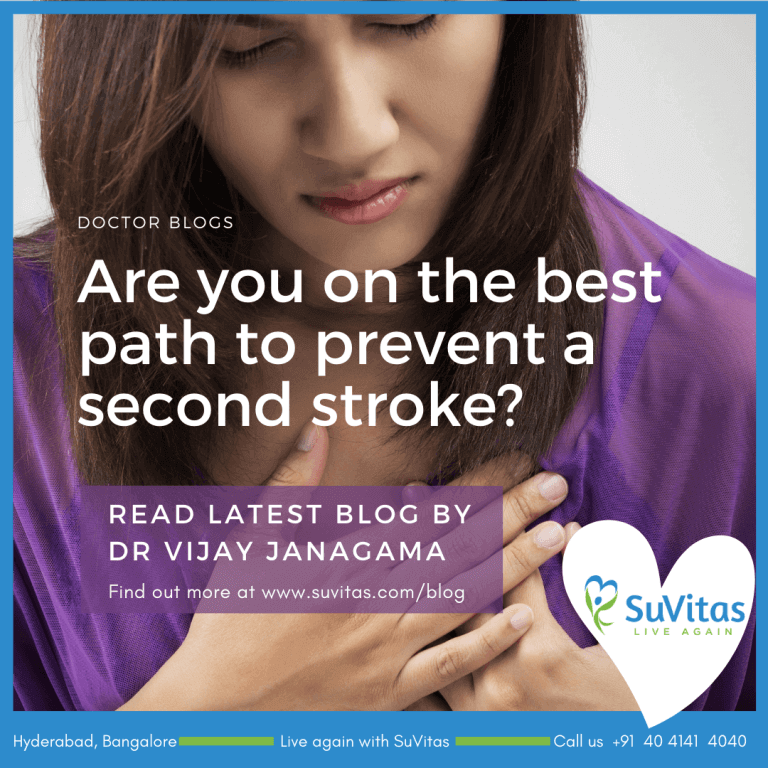How to Prevent a Second Stroke
“Your body can stand almost anything. It is your mind you should convince.””
After stroke, life takes a completely new turn. Like toddlers who learn to walk step by step, you will need to relearn the skills lost as a result of the damage caused to the brain. More daunting will be the fear of being prone to another attack since the risks of recurrent strokes are higher, especially among those who have not had an effective recovery. However, despite the risk factors there are many who live a near to normal and healthy life after surviving from strokes. With simple lifestyle modifications, appropriate medication and right diet; it is very much possible to reduce the risk of recurrent strokes and so also fast tread to a healthy recovery.
- Understand & Reduce the Risk Factors
The first three months after the stroke attack is considered to be the most probable period to suffer from a second stroke. The risks will continue to increase after 90 days and will remain until the next five years. However, research has revealed the prevalence of a second stroke mostly among survivors who had poor lifestyle and dietary habits.
Listed below are some of the key stroke risk factors,
- History of cardiac diseases, diabetes, high blood pressure and cholesterol
- Previous incidence of recurrent/mini strokes
- Cigarette smoking and alcohol consumption
- Atrial Fibrillation and Atherosclerosis
- Age ( The risk of recurrent strokes are higher in those aged 55 and above)
- Adopt Healthy Lifestyle Changes
Studies have proved the chances of recurrent strokes could be reduced by 20% by with an active lifestyle. Work with a rehabilitation partner to regain your mobility soon after your hospital discharge. Make sure to break the sweat everyday for at least 40 minutes and reduce weight if you are on the heavier side.
Switch to a stroke-preventative diet which includes green leafy and non-starchy vegetables, fish, poultry, whole grains, beans, nuts and berries. Cut excessive salt in all your foods and limit the intake of red meat, saturated fats and sweets.
- Follow up Care
It is important to constantly monitor your blood pressure since a higher count corresponds to increased risk of stroke. In case you have been diagnosed with any bulge in the artery, you will need to get a surgery done to prevent the risk of hemorrhagic stroke. You can take neuro-protective vitamin supplements after checking with your doctor. But it is always good to get the required vitamins like CoQ10 and Vitamin B3 from foods like spinach, broccoli, beetroots, tuna, salmon, chicken etc.
4. Stroke Rehabilitation for Effective Recovery
Recovery from stroke can vary from person to person. However, studies have found that stroke survivors who have undergone focused inpatient stroke/neurorehabilitation programmes have shown lesser risks of developing recurrent strokes. This is primarily because; several parameters are involved in ensuring the holistic recovery of a stroke survivor. It is practically difficult to monitor these risk factors within a homecare setting with limited support. Neurorehabilitation is the systematic approach followed to improve the quality of life in stroke survivors through the intervention of physical, cognitive, emotional and technology-assisted therapies.
Read: How in-patient rehabilitation can help in Stroke Recovery
Life is definitely not about never falling down, but in getting up every time we fall. With the right kind of support and care, life after stroke can be quite risk-free and healthy.
Know more about our Stroke Recovery Programme here- https://suvitas.com/rehabilitation-programs/stroke/

